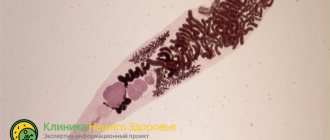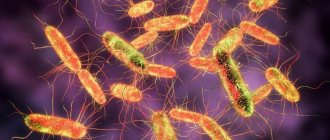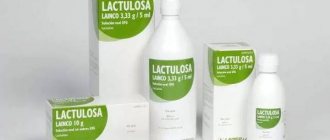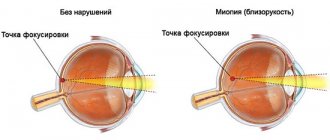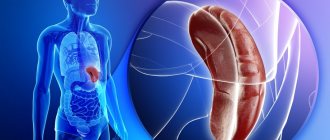Helpful information
- a gram-negative rod from the Enterobacteriaceae family.
More than 2000 serotypes are known. S. Typhimurium and S. enteriditis are more common. Bacteria are resistant to harmful environmental factors. In natural reservoirs, salmonella survive for 5 months, in soil - for more than 2.5 years, in meat products - up to 4 months, in products made from cream and milk - over 20 days. Preservation does not get rid of bacteria.
The rods multiply rapidly at room temperature. Many salmonella (hospital strains) are resistant to disinfectants containing chlorine. They die instantly at a temperature of 100 degrees.
Salmonellosis affects both domestic and wild animals. Sources of intestinal infection can be pigs, dogs, cats, pet turtles and cattle. There are frequent cases of salmonellosis infection in poultry (chickens, geese, ducks and quails).
Pathogens
The causative agents of salmonellosis infection are intestinal gram-negative motile bacilli of the genus Salmonella, which have several varieties and subspecies.
Most of them are pathogenic for both animals and humans, but out of several thousand serotypes (species groups), not all pose an epidemiological danger to humans.
The most common and cause salmonellosis in adults and children in 85-90% of cases worldwide include:
- Salmonella London;
- S/agona;
- S/newport;
- S/infantis;
- S/panama;
- S/enteritidis;
- S/typhimurium.
The incubation period, regardless of the form and variant of the disease, ranges from several hours to 3 days. The incubation period depends on the form and subtype of salmonellosis. Previously, it was customary to designate its varieties into groups in the diagnosis, but due to their insignificant symptomatic differences, today such clarifications as, for example, “salmonellosis group D” or “group C” are not indicated. Only clinical forms of the disease with the serotype of the detected salmonella are indicated to establish the source of infection.
Salmonellosis and its causes
Salmonellosis is an acute intestinal infection that affects the digestive system, causing intoxication and dehydration of the body. The causative agent is the bacterial bacillus Salmonella, which is a tiny formation up to 3 microns long (or 0.0003 cm). It is very mobile and does not form capsules or spores.
Salmonella is a tiny rod with flagella
Bacteria can persist in the environment for a very long time:
- up to 5 months - in water;
- up to six months - in meat;
- up to a year - in poultry meat, hard cheeses;
- up to 3 weeks - in milk;
- up to 30 days - in kefir;
- up to 4 months - in butter;
- from 3 to 9 months - in dry egg powder;
- about 3 weeks - on eggshells;
- up to one and a half years - in the soil.
Salmonella is a very insidious bacteria:
- When chicken eggs are stored for a long time (longer than 30 days) in the refrigerator, the bacterium is able to penetrate through the whole shell into the egg and actively multiply inside the yolk.
- Salmonella live and multiply well in meat and dairy products, without affecting the appearance or taste of the product in any way.
- Freezing contaminated products does not in any way affect the survival and activity of bacteria.
- There are known strains of Salmonella that are multiply resistant to antibacterial drugs and various disinfectants.
The carriers of the disease are agricultural, wild and domestic animals and birds, as well as rodents. It is difficult to determine by appearance whether an animal is sick or not; it may simply be a carrier of an infection.
Salmonellosis is an acute infectious disease caused by bacteria of the genus Salmonella
Ways of spread of infection
The source of salmonellosis infection is a small-sized rod bacterium (a few microns). The route of transmission is similar to helminthiasis - the fecal-oral method. We need to find an intermediate environment. Doctors talk about possible routes of infection:
- Food. Salmonella loves to nest in milk and eggs. Animals also suffer - you can become infected from a sick animal (bird) through trophic routes.
- Water outbreaks (on public beaches) are rarely reported.
- Specific public, closed institutions (hospitals) become sources of nosocomial infection. A special feature of the route is a relatively long incubation period, which increases the risk of spreading the infection.
The list of public and closed institutions is extremely long. The source of infection for a person can be another person or an animal. 100 thousand units of bacteria should enter the oral cavity of an adult.
Infection with salmonellosis is more often possible in the autumn-summer period. There is no strict division by season. Do not guess about the contagiousness of the product - take note of the list of dangerous elements of the diet:
- Eggs. Rumors vary regarding the safety of quail eggs.
- Chicken meat Few people eat meat and semi-finished products raw - they should be thoroughly cooked. It is easier for salmonella to take root and survive in meat.
- Fish, seafood.
- Less commonly, the cause is unwashed fruits and vegetables.
Pork and beef are rarely contagious. Sometimes transmission occurs through confectionery products containing egg cream. In hospitals, the microbe is transmitted through clothing, tools, and household items. A distinctive feature of hospital strains is their high resistance to antibiotics.
If contact-household, water and alimentary routes of spread of infection are not disputed, then airborne dust is ambiguous. They emphasize information about infection of the baby through the lungs. Infants receive the infection from the mother through the placenta during childbirth.
How is salmonellosis transmitted from person to person?
Salmonella can survive outside the human body for many months:
- in frozen meat – up to 12 months;
- in kefir and beer – up to 3 months;
- in human and animal feces – up to 3-4 years;
- indoors – up to 3 months;
- in water – up to 5 months;
- in shell eggs - up to 24 days.
This pathogenic microorganism dies when exposed to heat, as well as when treated with disinfectant solutions.
The minimum dose of the pathogen for the development of the disease is 1.5 million bacteria. The severity of symptoms depends on the pathogenicity of salmonella and the route of infection. After an infection, stable immunity is formed.
How is salmonellosis transmitted? The carriers of the disease are sick animals and people. The most dangerous is the release of bacteria without signs of disease. The person is very susceptible to infection.
Bacteria require a protein-rich environment to multiply. You can become infected with salmonellosis by eating thermally unprocessed food. Under favorable conditions, bacteria multiply quickly without changing the appearance of the product. What can you get infected from?
Products
| Meat | 70% of all cases of salmonellosis. Handicraft products are very dangerous. Salmonella is not killed by smoking and salting. | Products:
|
| Eggs | It is easy to become infected by eating infected eggs. The pathogen is transmitted from birds with salmonellosis. Droppings with a large amount of bacteria can get on the shell. After 3-4 days, salmonella penetrates inside and begins to actively spread. Most often, infection is recorded from eggs of domestic chickens. | Undesirable use of the product:
|
| Milk | When buying homemade milk or cheese, you should pay attention to the cleanliness of the dishes, the appearance and neatness of the seller. | Products:
|
Whether food products are contagious or not can be determined by bacteriological examination. Infection with salmonella is less common when consuming fish and dairy products. Salmonella gets onto fresh vegetables and berries when fertilized with bird and livestock droppings.
During foodborne transmission, a large number of Salmonella enter the body. Partial destruction of bacteria by gastric juice leads to the release of toxic substances. Toxins negatively affect blood vessels and the nervous system. This route of infection is characterized by severe intoxication.
Transmission of salmonella occurs from a sick person or animal. Infection is possible if the rules of personal hygiene are completely ignored.
Salmonella is released into the external environment with feces. In this case, a small amount of bacteria enters the body; signs of infection are not clearly expressed.
Household contact infection occurs in children and patients with weakened immune systems.
This route of infection is characterized by the transmission of harmful microorganisms from person to person.
Most often, infection occurs in summer or late spring. How is salmonellosis transmitted through water? Feces of infected animals end up in natural water bodies. The number of bacteria is small due to the low protein content, so infection rarely occurs.
Salmonella enters the body by drinking or accidentally ingesting raw water.
Airborne dust
How can you become infected through the air? In some cases, the excrement of salmonellosis-infected pigeons living in attics and rooftops is spread. Together with dust particles, bacteria enter living spaces and the ventilation system. Salmonellosis is not transmitted by airborne droplets.
Signs of salmonellosis appear some time after infection. can last from 4 hours to 5 days. In children, symptoms of intestinal infection appear faster than in adults.
Characteristic features:
- fever (up to 40 ◦C);
- chills, weakness, muscle pain;
- repeated and profuse vomiting;
- pain in the intestinal area;
- frequent watery stools mixed with greens and mucus;
- bloating due to increased gas formation in the intestines.
In severe cases of salmonellosis, dehydration quickly develops. The skin becomes dry and pale, blood pressure decreases. Convulsions may occur due to electrolyte imbalance. A decrease in the daily amount of urine excreted is characteristic. The consequences of dehydration are neurotoxicosis and renal failure.
In this situation, it would not hurt to remind you of the need to observe basic hygiene procedures, and in particular, thorough hand washing.
Carriers can also be “food workers”: people working in sausage shops or dairy plants, meat cutters. They are advised to undergo regular medical examinations and undergo bacterial cultures.
The predominant route of transmission of the causative agent of salmonellosis is food, as well as contact. Infection with salmonellosis can occur in the following situations:
- household contacts with a sick person (or a carrier of salmonellosis) in the family or at work;
- visiting public catering establishments where an infected employee works (distributor, dishwasher, kitchen worker);
- consumption of food products that have not been subjected to heat treatment (milk, cottage cheese, kefir, various vegetable and fruit salads), or poorly processed (rare steak);
- contact with an infected animal (farm, domestic).
Healthy carriers and animals play a significant role in the transmission of salmonella infection. The carrier can release the pathogen into the environment for a long time, but at the same time not feel any signs of ill health. This condition can last for months and is detected accidentally during a laboratory examination.
Animals tolerate salmonellosis differently than humans; external signs of the disease may be absent. Possible sources of salmonella infection are:
- farm animals (large and small livestock);
- pets (cats, hamsters, turtles, lizards);
- city birds (pigeons, sparrows);
- domestic and farm birds (especially chickens and ducks).
After an illness, type-specific immunity is formed, that is, it is possible to develop a disease caused by another type of salmonella.
The so-called artificial or artificial route of transmission, which is implemented in medical institutions, requires special attention. In this case, the source of infection is medical personnel, and the transmission factors are medical instruments, linen, furniture, etc. Transmission of salmonella infection occurs when caring for a patient or performing medical procedures.
There are 5 clinical forms of the disease:
- carriage (bacteria carriage) - no symptoms; the presence of salmonella can only be detected using bacteriological and serological tests;
- erased form - mild diarrhea for 1-2 days; there are no other signs of salmonellosis;
- gastrointestinal form (the most common manifestation of the disease), characterized by a sharp increase in body temperature to 39 degrees, intoxication (weakness, headache, enlargement of the liver and spleen), nausea and vomiting (first of undigested food, then mucus and bile), abdominal pain , flatulence, debilitating watery diarrhea that lasts up to 10 days, leading to dehydration;
- typhoid-like form - a roseola rash appears on the body (flat, smooth pale pink or reddish spots of round or irregular shape with clear or blurred edges with a diameter of 1-6 mm) as with typhoid fever. Body temperature rises and falls in waves;
- septic form - the infection spreads throughout the body and leads to the formation of purulent foci (abscesses) in the internal organs. It occurs in weakened people and patients with immunodeficiency conditions (HIV infection, etc.) and children. In children, the septic form of salmonellosis is often accompanied by serious consequences - inflammation of the lining of the brain (meningeal syndrome) due to easier penetration of the infection through the blood-brain barrier.
The impact of salmonellosis on the body
The development of intoxication due to poisoning by products affected by the bacterium occurs according to several schemes, depending on the form of the disease.
Gastroenteric form
It is considered the most common. It is characterized by acute, rapid development, literally within a few hours from the moment of infection. The disease first appears:
- body aches;
- chills, elevated body temperature;
- headache.
Then the following symptoms appear:
- spastic pain localized in the navel and epigastrium;
- nausea, and then repeated vomiting;
- frequent stools, turning into diarrhea with watery, foaming, often greenish stools that emit a specific stench;
- against the background of high body temperature, the skin is pale, sometimes cyanosis (blue discoloration) is observed;
- dry and coated tongue;
- bloating, palpation – pain and intestinal rumbling;
- muffled heart sounds, tachycardia, decreased blood pressure, and, over time, weakening of the pulse;
- decreased urinary function;
- the urge to defecate is always productive.
Severe cases of this form of salmonellosis are accompanied by clonic convulsions (involuntary twitching), usually in the lower extremities.
Gastroenterocolitic form
At first, the symptoms are similar to the gastroenteric form, but by 2-3 days there is usually a decrease in the volume of stool and the appearance of mucus or blood in it. On palpation, the abdomen is spasmodic and painful in the area of the colon. There is an unproductive urge to defecate (tenesmus). The clinical signs are thus similar to those of the dysentery variant of the same name.
Gastritis form
This is one of the rare variants, characterized by an acute onset, repeated vomiting and epigastric pain. Intoxication is mild, no diarrhea is observed, the course of salmonellosis is short-lived, with a favorable prognosis.
Typhoid-like form
It begins with manifestations of gastroenteritis, then symptoms of intoxication (nausea, diarrhea, vomiting) may disappear, but other signs appear:
- severe weakness;
- insomnia;
- headache;
- wave-like or constant increase in temperature;
- pale skin.
On days 3-5, an outbreak of hepatolienal syndrome (a sharp increase in the size of the liver and spleen) may occur, blood pressure may drop, and the heart rate may decrease (signs of bradycardia). The main features of the clinical picture are very similar to the symptoms of typhoid fever, which makes clinical differentiation of the diagnosis difficult.
Septic form
This form may begin with manifestations of gastroenteritis, alternating with feverish states with chills and profuse sweating, myalgia and tachycardia. Hepatosplenomegaly (enlargement of the liver and spleen) may also develop. This form of the disease is characterized by a complicated clinical picture - the appearance of secondary purulent foci:
- in the kidneys (cystitis, pyelitis);
- in muscles and subcutaneous tissue (phlegmon, abscesses);
- in the heart (endocarditis);
- in the lungs (pneumonia, pleurisy), etc.
In addition, the development of iritis and iridocyclitis (inflammatory eye diseases) is often observed. The septic form is characterized by a long course of the disease.
Typhoid-like and septic forms are generalized forms of salmonellosis.
Pathogenesis
The pathogenesis of the development of the disease in any of its forms is due to the extreme toxicity of the pathogens, or rather, the products of their vital activity. Resistant to gastric microflora, Salmonella bacilli quickly penetrate the mucous membrane of the small intestine and attach to the cell membranes of enterocytes (intestinal epithelial cells). As a result of the active life of salmonella, large amounts of cytotoxins, enterotoxins and endotoxins are released. They provoke pain, diarrhea and other intoxication symptoms, leading to dehydration and catastrophic loss of electrolytes.
A previous infection, as a rule, contributes to the development of immunity in a person, but only to a certain form of the disease.
How can you become infected with salmonellosis?
The transmission mechanism of salmonellosis is fecal-oral. That is, bacteria are released from a sick person or animal with feces, and enter the body through the mouth.
This route is the main method of transmission of infection. Infection most often occurs during food intake. If the rules of heat treatment were not followed when preparing meat, fish, poultry, eggs, then the risk of disease increases significantly.
The transmission mechanism of salmonellosis is fecal-oral. That is, bacteria are released from a sick person or animal with feces, and enter the body through the mouth.
What are the sources of salmonellosis infection?
Salmonellosis. The source of salmonellosis infection can be animals and food contaminated with salmonella, a person with salmonellosis (patients excrete salmonella in their feces) or a bacteria carrier (a person who has had salmonellosis in the past and continues to excrete microbes in their feces).
The most common source of infections in adults is food contaminated with microbes (waterfowl eggs, chicken eggs). In most cases, salmonellosis occurs due to improper or insufficient heat treatment of food.
For children (especially 1 year of age), the greatest danger as a source of infections due to salmonellosis is a person with salmonellosis or a carrier of the infection. Infection of children with salmonellosis occurs through contaminated objects, linen, dishes, etc.
How to avoid infection
Preventive measures at the state level are carried out by veterinary and sanitary-epidemiological services. They control:
- meat processing industry (livestock slaughter and raw material processing);
- catering enterprises (preparation technology, storage and sale of finished products);
- organizing catering in kindergartens and schools.
In addition, sanitary services monitor the process of examining newly hired employees at catering, retail and childcare establishments, as well as regular examinations of food service workers.
For individual prevention, you should know and follow several rules.
The main rule for preventing salmonellosis: wash your hands thoroughly with soap.
Doctors rightly call all intestinal infections “diseases of dirty hands,” so the very first rule for preventing salmonellosis is: wash your hands thoroughly after visiting the restroom and before eating. Since salmonella enters the body through food, you must remember the following:
- Never buy meat, meat products, poultry, eggs (chicken, duck), cottage cheese, milk, butter, cheese (especially soft) in places of unauthorized trade.
- When purchasing eggs, always look at the date of sorting, which should be indicated on the container and the egg itself.
Product sales period is 25 days. Interesting fact: there is an opinion that you can eat raw quail eggs, since quails do not suffer from salmonellosis. Proponents of this theory argue that safety is associated with the high body temperature of quails (42°C), at which salmonella does not multiply. The truth is that quails do not really suffer from salmonellosis, but they can carry bacteria and become a source of infection. Therefore, you should eat quail eggs only after heat treatment! - When buying products at the market or in a store, always pay attention to the so-called product proximity of the products. Raw and finished products must be located in separate display cases and sold by different people.
- Do not visit dubious canteens, snack bars, cafes, especially in the summer, when the incidence of salmonellosis increases.
- At home, be sure to follow the basic rules for storing food and cooking technology:
- keep raw foods and prepared foods separately;
Raw and prepared foods should be stored separately in the refrigerator
Clean your refrigerator regularly, paying special attention to egg storage compartments.
Surfaces must be cleaned with any disinfectant; You can use a 2% baking soda solution. It is easy to prepare: for 1 liter of warm water you need 2 tbsp. l. soda, stir well, and the solution is ready. An excellent antiseptic is 3% hydrogen peroxide. This product can be used to clean the refrigerator and wipe cutting surfaces. - keep raw foods and prepared foods separately;
- there should be different cutting boards and knives for raw and prepared foods;
- thoroughly wash and scald kitchen utensils with boiling water;
The only temperature that no strain of bacteria can withstand is the boiling point of water. - cook eggs for 10–15 minutes from the moment of boiling, poultry for 40 minutes, meat for at least 2 hours. Meat dishes should be cooked and stewed not in one piece, but in small portioned pieces;
- do not sample raw minced meat;
- do not drink raw milk;
- rinse fruits, herbs and vegetables well under running and then boiled water;
- When preparing food, wash your hands after cutting raw meat, fish, poultry, and contact with raw eggs.
There is no specific prevention of salmonellosis in humans.
Disease prevention in children must be monitored especially carefully, because children are more susceptible to salmonellosis pathogens:
- All family members must carefully observe personal hygiene.
- Adults should not be allowed to use children's towels, feed a child with unwashed hands, etc.
- Mom needs to be very careful when preparing baby food and strictly follow all the rules for sanitizing food products.
- When cleaning, special attention should be paid to places where bacteria are most likely to accumulate: door handles, switches, water taps, children's furniture.
- It is recommended to wash children's toys as often as possible, preferably with a soda solution.
Maintaining food hygiene will help avoid salmonellosis in children and adults
Pregnancy is an important period for every woman; at this time, you need to take special responsibility for your health. Salmonellosis is dangerous for the expectant mother and the baby due to its complications. Therefore, a pregnant woman must strictly observe the rules of personal hygiene, as well as follow general recommendations for the prevention of the disease.
Preventive measures at the state level are carried out by veterinary and sanitary-epidemiological services. They control:
- meat processing industry (livestock slaughter and raw material processing);
- catering enterprises (preparation technology, storage and sale of finished products);
- organizing catering in kindergartens and schools.
In addition, sanitary services monitor the process of examining newly hired employees at catering, retail and childcare establishments, as well as regular examinations of food service workers.
Doctors rightly call all intestinal infections “diseases of dirty hands,” so the very first rule for preventing salmonellosis is: wash your hands thoroughly after visiting the restroom and before eating. Since salmonella enters the body through food, you must remember the following:
- Never buy meat, meat products, poultry, eggs (chicken, duck), cottage cheese, milk, butter, cheese (especially soft) in places of unauthorized trade.
- When purchasing eggs, always look at the date of sorting, which should be indicated on the container and the egg itself.
Product sales period is 25 days. Interesting fact: there is an opinion that you can eat raw quail eggs, since quails do not suffer from salmonellosis. Proponents of this theory argue that safety is associated with the high body temperature of quails (42°C), at which salmonella does not multiply. The truth is that quails do not really suffer from salmonellosis, but they can carry bacteria and become a source of infection. Therefore, you should eat quail eggs only after heat treatment! - When buying products at the market or in a store, always pay attention to the so-called product proximity of the products. Raw and finished products must be located in separate display cases and sold by different people.
- Do not visit dubious canteens, snack bars, cafes, especially in the summer, when the incidence of salmonellosis increases.
- At home, be sure to follow the basic rules for storing food and cooking technology:
- keep raw foods and prepared foods separately;
- Clean your refrigerator regularly, paying special attention to egg storage compartments.
Surfaces must be cleaned with any disinfectant; You can use a 2% baking soda solution. It is easy to prepare: for 1 liter of warm water you need 2 tbsp. l. soda, stir well, and the solution is ready. An excellent antiseptic is 3% hydrogen peroxide. This product can be used to clean the refrigerator and wipe cutting surfaces. - there should be different cutting boards and knives for raw and prepared foods;
- thoroughly wash and scald kitchen utensils with boiling water;
The only temperature that no strain of bacteria can withstand is the boiling point of water. - cook eggs for 10–15 minutes from the moment of boiling, poultry for 40 minutes, meat for at least 2 hours. Meat dishes should be cooked and stewed not in one piece, but in small portioned pieces;
- do not sample raw minced meat;
- do not drink raw milk;
- rinse fruits, herbs and vegetables well under running and then boiled water;
- When preparing food, wash your hands after cutting raw meat, fish, poultry, and contact with raw eggs.
- All family members must carefully observe personal hygiene.
- Adults should not be allowed to use children's towels, feed a child with unwashed hands, etc.
- Mom needs to be very careful when preparing baby food and strictly follow all the rules for sanitizing food products.
- When cleaning, special attention should be paid to places where bacteria are most likely to accumulate: door handles, switches, water taps, children's furniture.
- It is recommended to wash children's toys as often as possible, preferably with a soda solution.
Pregnancy is an important period for every woman; at this time, you need to take your health with special responsibility. Salmonellosis is dangerous for the expectant mother and the baby due to its complications. Therefore, a pregnant woman must strictly observe the rules of personal hygiene, as well as follow general recommendations for the prevention of the disease.
Abdominal pain, fever, loose stools, vomiting, headaches - these symptoms may be signs of salmonellosis. What is this disease? How can you get infected with it and what is the prevention of “dirty hands disease”?
The household route, like contact, is most dangerous for young children. Bacteria are transmitted through household items that do not pose a threat to adults with strong immune systems (toys, potties in a hospital or nursery, dishes, towels). That is why prevention is important: cleaning using disinfectant solutions, quartz treatment.
Dietary recommendations
In case of salmonellosis, baby food should be gentle, protecting the intestinal mucosa from strong mechanical and chemical effects. The following should be completely excluded from the diet:
- whole milk;
- vegetables with coarse fiber;
- animal fats;
- marinades, spices, smoked meats, seasonings.
The following will be useful for a child affected by salmonella:
- cottage cheese;
- low-fat cheese;
- boiled fish;
- fruit jelly;
- steam cutlets and meatballs;
- oat and rice porridges with water and vegetable broths.
The diet must be followed for 4 weeks from the onset of the disease.
- Remember that the consequences of salmonellosis undermine the immune system, attracting secondary infection or exacerbation of chronic pathologies. Salmonella remaining in the intestines spread throughout the body and form local foci of inflammation. A child who has recovered from the disease may subsequently suffer from sore throat, otitis media or pneumonia for a long time.
- Observe the rules of personal hygiene and do not violate the cooking technology. Subject animal products to high temperature processing. Do not give your child raw eggs, and wash the shells thoroughly before preparing omelettes and scrambled eggs.
- To prevent salmonella infection, store meat in the freezer. Have a separate cutting board for cutting up game and chickens.
If you consult a doctor in a timely manner, the prognosis for treatment of salmonellosis is favorable. Therapy takes place within 5–10 days, but immunity against salmonella is not developed. Therefore, the child may get sick again.
A child's body is much weaker than an adult's.
Therefore, children are more likely to be at risk of contracting poisoning, because this requires very little pathogenic bacteria and poor hygiene. Such diseases most often occur when the pathogen Salmonella enters the child's body. It can persist for quite a long time in water, meat, milk and on the surface of chicken eggs.
Signs of salmonellosis
Self-medication of salmonellosis is dangerous. If you suspect an intestinal infection, you should consult a doctor. Therapy for salmonellosis is carried out in the infectious diseases departments of the hospital.
First aid:
- enterosorbents (sorbex or activated carbon);
- Stay hydrated (drink at least a glass of water after each visit to the toilet).
In the hospital, intravenous administration of glucose and various saline solutions is carried out. The composition of the infusion is selected individually and depends on the content of electrolytes in the blood of a patient with salmonellosis. Professional treatment will help you quickly cope with the manifestations of the disease.
The first signs of salmonellosis infection are always associated with the activity and functioning of the gastrointestinal tract. This is where the main problem of timely diagnosis of the disease lies. The fact is that a person, experiencing the symptoms of simple poisoning, in the overwhelming majority of cases, simply ignores all the symptoms and signs, classifying them as simple, household poisoning and mild intoxication.
Let’s define the main manifestations of salmonellosis in order to understand at what symptoms it’s time to sound the alarm:
- Increase in body temperature to 40 C, with severe infection.
- Pronounced pain in the intestinal area.
- Pain in the navel area.
- Stomach upset, which is accompanied by dehydration and general loss of strength.
- Severe headache.
Moreover, if it is salmonellosis, all the symptoms will only worsen, and at home, it is impossible to remove the manifestations of poisoning. It is necessary to call an ambulance.
Do not under any circumstances try to self-medicate this disease. At the first suspicion of infection, call an ambulance. Treatment of salmonellosis is carried out in infectious diseases departments.
Before the ambulance arrives, you can give the patient sorbents to drink, for example, activated carbon, Atoxyl or Sorbex. Then start drinking it with water. It is believed that after each bowel movement you should drink a glass of water.
If vomiting is severe, dehydration will be treated by a medical professional. They will connect the IVs and begin administering intravenous solutions.
Signs and symptoms of salmonellosis in children
The infection does not appear immediately. The incubation period is the time from infection to the appearance of the first symptoms, which can last 1–7 days. It all depends on the form of the disease.
The initial stage of salmonellosis is accompanied by colitis, a disruption of the colon. The signs of this infection are very diverse. It may resemble other diseases of the gastrointestinal tract: gastritis, gastroenteritis, enteritis. It all depends on the method of infection.
The main symptoms include:
- temperature increase;
- nausea and vomiting;
- loss of appetite;
- dehydration;
- poor sleep;
- pain in the stomach;
- frequent diarrhea, possibly with impurities.
Symptoms of salmonellosis in children
For any manifestations of salmonellosis, you should contact your pediatrician. After examination and tests, the specialist will make an accurate diagnosis. With the disease, the liver or spleen is enlarged. Examination of blood, urine, feces, and vomit can detect the presence of antibodies in the child’s biological material.
Salmonella and salmonellosis - video
It should be remembered that a disease is easier to prevent than to treat. Salmonellosis is a serious disease that is dangerous due to its complications, therefore preventive measures must be approached with full responsibility. Take care of yourself and your loved ones!
It should be remembered that a disease is easier to prevent than to treat. Salmonellosis is a serious disease that is dangerous due to its complications, therefore preventive measures must be approached with full responsibility. Take care of yourself and your loved ones!
Salmonellosis is a rather dangerous intestinal infection, the development of which is provoked by Salmonella bacteria. Different types of these protozoa are resistant to external negative factors and are perceived differently by the human body.
After a person gets sick with salmonellosis, he remains immune, but only to a specific type of salmonella. The situation is complicated by the fact that this disease has many sources of infection and over time its prevalence does not decrease, unlike many other intestinal infections.
So, what are the transmission routes when diagnosed with salmonellosis and how does the infection develop?
- Ways of transmission of salmonellosis
Mechanism of disease development
Salmonellosis. Infection usually occurs after contact with infected animals or after eating food containing salmonella. Infection by airborne droplets, water, and everyday objects is also possible. The source of infection may also be other people who are carriers of salmonellosis bacilli.
Not every time bacteria enters the body through the mouth, illness occurs. First, the bacteria enter the human stomach, which contains gastric juice. Salmonella is sensitive to acidic conditions, so gastric juice containing hydrochloric acid can kill some of the bacteria. Therefore, people who have problems with the secretion of gastric juice are most sensitive to bacteria.
If the gastric barrier has been successfully passed, then bacteria colonize the intestines and begin their destructive activity. They can attach well to the intestinal mucosa and penetrate into superficial tissues. In this case, bacteria can release various toxins that poison the body and cause malaise, vomiting and diarrhea. Dying salmonella also release dangerous toxins.
Salmonella is also very good at evading the body's defenses. Having detected an invasion, the immune system sends special cells - macrophages - towards the pathogens. However, salmonella have learned to use these cells to their advantage.
Being absorbed by macrophages, some Salmonella do not die, but move along with them through the bloodstream and thus move to other tissues of the body. Thus, salmonella can affect not only the intestines, but also the liver, kidneys, heart and even the meninges. This feature of salmonellosis pathogens is the reason that the disease can lead to severe complications and extend far beyond the gastrointestinal tract.
Anyone can get salmonellosis, regardless of age and gender. However, young children and the elderly are most susceptible to it due to their weakened immune systems. In addition, their disease is more severe.
The disease has a clear seasonal dependence. During the warm season, there is a peak in diseases. However, you can become infected with salmonellosis in any season.
Prevention
To prevent infection, you need to know how salmonellosis is transmitted. Preventing a disease is always easier than treating it. Following simple rules will help you stay healthy.
Helpful Tips:
- buy proven products, control the production date;
- wash your hands thoroughly before eating;
- do not eat half-raw foods;
- do not drink water from natural bodies of water, be careful when swimming.
Salmonellosis is one of the most dangerous intestinal infections. The disease can become generalized with the formation of abscesses in tissues and internal organs. An important preventive measure is identifying sick people and carriers of infection. For this purpose, bacteriological examinations of workers in the food industry, children's and medical institutions are carried out.
Prevention of salmonellosis cannot provide complete protection against this disease. But it significantly reduces the risk of its development. Below we have collected for you actions with which you can protect yourself and your loved ones from this disease:
- Buy all products only from licensed markets or shops. There, meat, dairy products and eggs are tested.
- Maintain basic personal hygiene. Always wash your hands before preparing or eating food.
- Maintain adequate heat treatment when cooking meat products and eggs.
- When enrolling your child in kindergarten or school, do not hesitate to ask canteen workers about the availability of medical books.
- Do not swim in waters where cattle drink. Also try not to swallow water while swimming.
Salmonellosis is a highly contagious intestinal infection. You can become infected by eating eggs, meat or dairy products. People who have or have had salmonellosis in the recent past are also contagious. The causative agent of this infection can also be found in bodies of water in which people swim.
Symptoms of the disease develop during the first two days after infection. Salmonellosis is manifested by severe intoxication and profuse diarrhea, which quickly leads to severe dehydration. When the first signs of illness appear, seek medical help immediately; self-medication can lead to serious consequences.
There is no specific prevention (vaccination) against salmonellosis, since the diversity of this microbial group is great. Preventive measures include:
Salmonellosis is a completely manageable disease if you are careful about your health.
Pathways and mechanisms of disease transmission
Many people are interested in whether salmonellosis is contagious and how this bacterial disease is transmitted from person to person. Knowledge of the transmission mechanism is necessary for effective prevention and protection of oneself from an infectious disease.
The most common route of transmission of salmonellosis is fecal-oral . A person can become infected with this bacterium by eating food contaminated with it. You can also become infected while swimming in bodies of water infected with salmonella.
Infection from animals
There are natural natural reservoirs for this bacterial infection. Salmonella is most often transmitted to humans from animals infected with it . Poultry (chickens, ducks) and animals (pigs and cattle) can be carriers of this bacterial infection.
Infected animals or birds, provided they have strong immunity, do not suffer from salmonellosis, but are only its carriers. According to statistics, more than 50% of domestic pigs are infected with this bacterial infection.
Infection with salmonellosis most often occurs when eating insufficiently heat-treated eggs, meat, or unsterilized homemade milk and fermented milk products. People who care for infected animals or who work in slaughterhouses and meat processing plants are also often infected. Bacteria enter the body through poorly washed hands after such work.
You can also become infected through contact with cats and dogs . About 10% of homeless animals are carriers of salmonella. Sometimes this disease also occurs in pets walking outside.
Farm animals, birds, dogs and cats become infected with salmonellosis when they drink contaminated water or while swimming in it. Wild birds can spread this infection among domestic animals by contaminating the water in which they bathe with their feces.
There is an opinion among the population that if eggs are washed well with soap, they become absolutely safe and cannot infect a person with salmonellosis. In fact, bacteria are not found on the shell, but in the middle of the egg, in the white and yolk. Eggs need to be washed; there may be many other dangerous microorganisms and substances on their surface, but this action will not protect yourself from salmonellosis.
Infection from humans
Indeed, you can become infected with salmonellosis from a person who has this disease or has recently had it. At the same time, the route of infection remains the same, fecal-oral. You can become infected from a sick person by sharing utensils with him or by not maintaining personal hygiene after shaking hands with him .
Treatment of salmonellosis
Mode. Diet
Bed rest is prescribed for severe intoxication and fluid loss. Ward - for moderate to mild course. Diet - table No. 4. Food products that irritate the stomach and intestines, dairy products, and refractory fats are excluded from the diet.
Etiotropic therapy
Moderate and severe localized form of the disease – enterix♠ two capsules three times a day for 5–6 days; chlorquinaldol 0.2 g 3 times a day for 3–5 days. Generalized form - ciprofloxacin 500 mg twice a day; Ceftriaxone 2 g once daily intramuscularly or intravenously for 7–14 days. For all forms of bacterial carriage and the decreed category of persons - Salmonella bacteriophage, two tablets three times a day or 50 ml twice a day 30 minutes before meals for 5-7 days; sanviritrin♠ two tablets 3-4 times a day for 7-14 days.
Pathogenetic agents
Rehydration therapy. Oral (with dehydration of I–II degree and no vomiting): glucosolan♠, citroglucosolan, rehydron♠. Rehydration is carried out in two stages, the duration of the 1st stage is up to 2 hours, the 2nd stage is up to 3 days. Volume 30–70 ml/kg, speed 0.5–1.5 l/h, temperature 37–40 °C. Parenteral: Chlosol♠, Trisol♠.
Detoxification therapy. Only when treating dehydration. Glucose♠, rheopolyglucin♠ 200–400 ml intravenous drip.
Eubiotics and biological products: bactisubtil♠ one capsule 3–6 times a day 1 hour before meals, Linex♠ two capsules three times a day for 2 weeks; lactobacilli acidophilus kefir fungi (atsipol♠) one tablet three times a day; bifidobacterium bifidum (bifidumbacterin♠) five doses three times a day for 1–2 months.
Sorbents: hydrolytic lignin (polyphepan♠) one tablespoon 3-4 times a day for 5-7 days; activated carbon (carbolong♠) 5–10 g three times a day for 3–15 days; dioctahedral smectite (neosmectin♠) one powder three times a day for 5–7 days.
Enzyme therapy: pancreatin one powder three times a day for 2–3 months; Mezim Forte♠ one tablet three times a day for 1 month; oraza♠ one teaspoon three times a day for 2–4 weeks with meals.
Antidiarrheal drugs: calcium gluconate 1-3 g 2-3 times a day, indomethacin 50 mg three times a day every 3 hours for 1-2 days, Kassirsky powders one powder three times a day.
Antispasmodics: drotaverine (no-spa♠) 0.04 g three times a day, papaverine 0.04 g three times a day.
Additional treatment methods (surgical, physiotherapeutic, sanatorium-resort)
Gastric lavage using a tubeless method is necessary if the patient’s condition allows.
The duration of hospital stay for a localized form is up to 14 days, for a generalized form it is 28–30 days. Discharge is carried out after clinical recovery and a negative result of bacteriological examination of stool, which is carried out 2 days after the end of treatment.
Patients in the decreed group are discharged after two control stool examinations (the first - no earlier than the 3rd day after the end of treatment, the second - after 1-2 days). Patients who do not excrete pathogens are allowed to work.
Diagnostics
If salmonellosis is suspected, you should consult an infectious disease specialist. Comprehensive diagnostics of salmonellosis includes:
- general clinical analysis of urine and blood;
- biochemical tests;
- bacteriological culture;
- serological reactions.
Diagnosis of salmonellosis begins with a general clinical analysis of blood and urine. There may be no significant changes in the blood (a good prognostic sign) or leukocytosis and a shift in the leukocyte formula to the left (a sign of a bacterial infection). In a general urine test, changes are observed only with severe dehydration or the development of acute renal failure.
To assess the degree of dehydration, as well as monitor the ongoing infusion therapy, indicators of acid-base and electrolyte balance are determined.
Specific diagnosis of Salmonella infection is based on the isolation of the pathogen from feces and vomit (gastrointestinal form), as well as from the blood (generalized form). The material is collected before the start of antimicrobial therapy. For sowing and isolating a pure microbial culture, traditional nutrient media (Ploskireva, Endo, Levin) are used.
If it is necessary to establish a relationship between the development of salmonellosis and the consumption of a specific product or to confirm the fact of a nosocomial infection, then transmission factors are also subject to bacteriological examination. Such a relationship can only be confirmed if the same variant of Salmonella is isolated from the human body and the contaminated product.
If technical capabilities allow, then specific Salmonella antigens in the biological fluids of a sick person are determined by enzyme immunoassay. The indirect hemagglutination reaction (IRHA with Salmonella antigen), carried out over time, is also quite informative.
